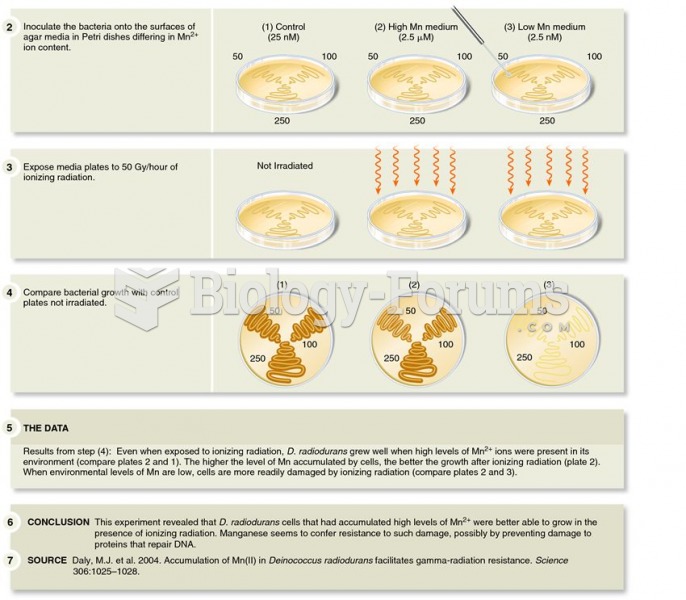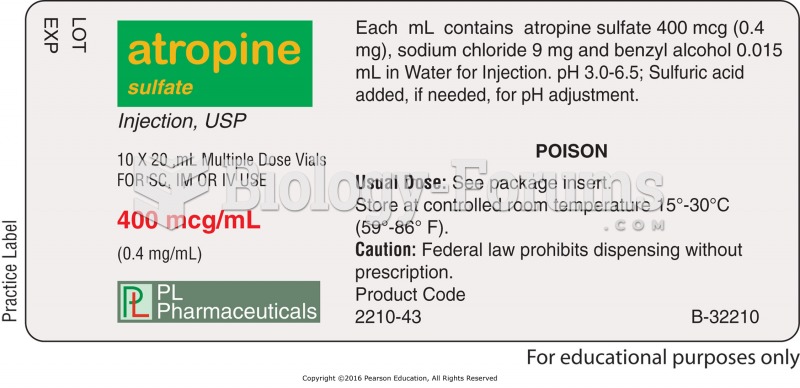|
|
|
About 60% of newborn infants in the United States are jaundiced; that is, they look yellow. Kernicterus is a form of brain damage caused by excessive jaundice. When babies begin to be affected by excessive jaundice and begin to have brain damage, they become excessively lethargic.
Sildenafil (Viagra®) has two actions that may be of consequence in patients with heart disease. It can lower the blood pressure, and it can interact with nitrates. It should never be used in patients who are taking nitrates.
Drying your hands with a paper towel will reduce the bacterial count on your hands by 45–60%.
Thyroid conditions cause a higher risk of fibromyalgia and chronic fatigue syndrome.
There are more nerve cells in one human brain than there are stars in the Milky Way.







